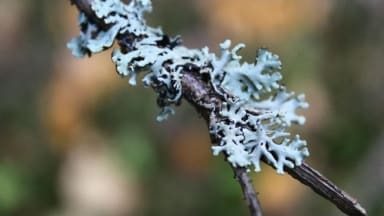
In an intriguing article by Paul Simons for the Guardian, he writes about lichens surviving and photosynthesising in the vacuum of space, without water, exposed to extreme temperatures, radiation and ultraviolet rays from the sun for 18 months.
Lichens are fascinating. They are made up of two or more different organisms, which exist in a mutually beneficial relationship called symbiosis. The fungus element requires carbohydrate as a food source and the algae or cyanobacteria on the other hand require shelter. As the algae/cyanobacteria are photosynthetic they provide the food for the fungus in return for that shelter.
According to Simons, in experimental conditions lichens kept in a simulated Martian environment (intensely dry and cold, low atmospheric pressure and volatile radiation), remained active, indicating that life could exist on Mars.
“In fact, lichens can cope with radiation 12,000 times the lethal dose for humans and still carry on photosynthesising, although their reproduction can be harmed”, writes Simons.

